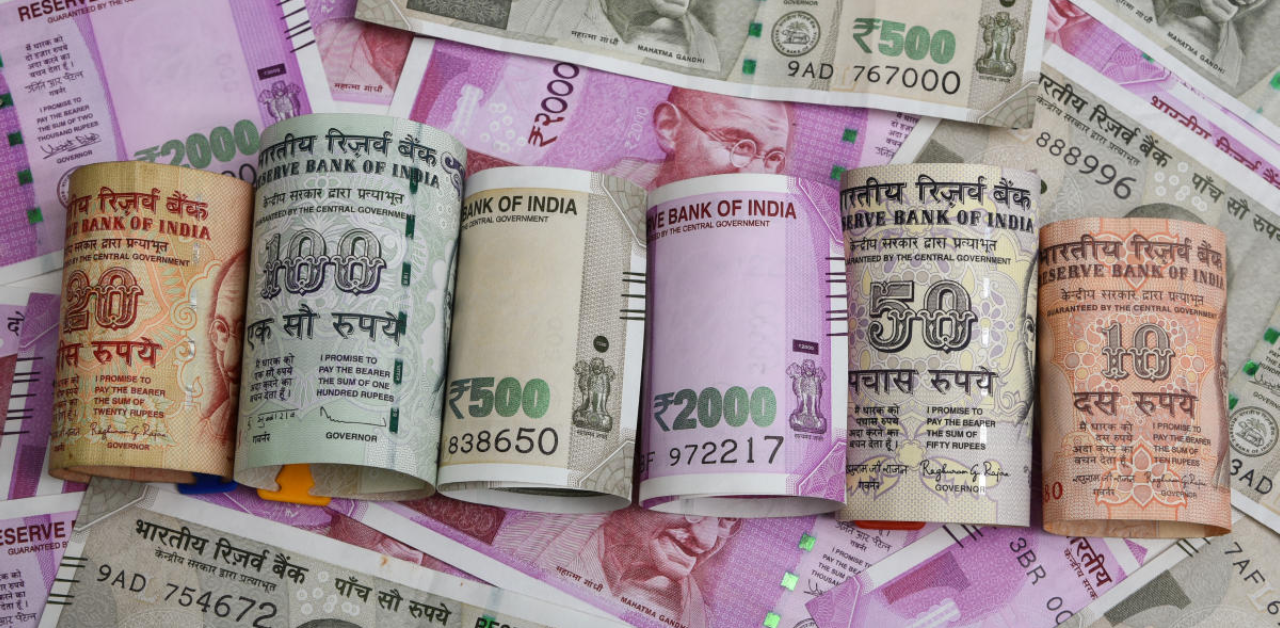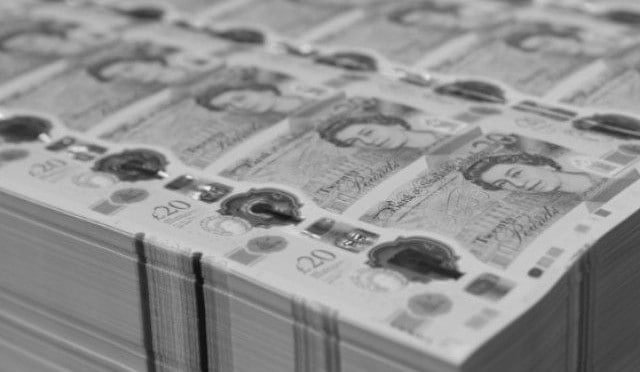Experts keep predicting its demise, but as a reserve currency the dollar remains unchallenged. Still, it has lost a little of its weight in recent years, and Switzerland is partly to blame.

The dollar has been the world’s most important currency for decades.
This year, many tourists are making the same observation during their summer vacation: Americans are everywhere. Hotels, restaurants and museums from all over the world are reporting an unusually high number of guests from the U.S. The same is true for Switzerland. According to forecasts by BAK Economics, the United States is likely to be responsible for 2.1 million overnight stays this summer. That would mean the U.S. could even pass Germany as the largest foreign market.
Global currency and sanction weapon
There are many reasons for the boom. One of the most important is the strength of the dollar. The U.S. currency has appreciated against many other currencies in recent years, partly due to higher economic growth, tighter monetary policy and geopolitical uncertainty. The purchasing power of the dollar is correspondingly high. American tourists can afford more in many countries. This is making itself felt in the affected countries: Travelers from the U.S. are flush with money and are spending accordingly.
However, the strength of the dollar could quickly come to an end. Foreign exchange markets are nervous trading centers; the ups and downs of exchange rates follow erratic patterns and are almost impossible to predict. But even if the dollar were to weaken soon, one thing has remained unchanged for decades: its position as the global reserve currency. Regardless of whether the dollar is highly valued or not, no other currency can even come close to the greenback in terms of global significance. If money rules the world, then the dollar rules money.
This dominance is not automatic. People regularly predict the demise of the dollar. They always find new reasons to support the belief in an inevitable decline. For some years now, this has also included the argument that the U.S. has abused its privilege as the issuer of currency by turning it into a weapon of sanctions, most recently against Russia. Some predicted that the decision to decouple Russia from the dollar system and freeze its dollar reserves would prompt many countries to reduce their dependence on the dollar.
Three times the weight of the euro
As convincing as the argument sounds, it is only partially reflected in the data so far. The dollar is still the undisputed reserve currency. Here are a few figures: The dollar is involved in 88% of all foreign exchange transactions. An estimated 54% of global trade is transacted in dollars. And 58% of all foreign exchange reserves held by central banks – to boost confidence in their monetary policy or to be able to intervene against a possible weakening of their own currency – are denominated in dollars.
The dominance seems unbroken. Nevertheless, it is true that the dollar has lost some of its weight on the global stage. For two decades, the proportion of dollars in the foreign exchange reserves of central banks and governments, which currently amount to around $12 trillion, has been falling. While the proportion in the early 2000s was still over 70%, it is now less than 60%. However, the decline is happening quite slowly. And the rate is still almost three times as high as that of the second-ranked euro at 20%.
There is no broad-based movement away from dollars. This is also confirmed by an analysis by the Federal Reserve Bank of New York for the period from 2015 to 2021. During this time, the dollar share of foreign exchange reserves fell by 7 percentage points. However, the study shows that the decline is mainly due to the behavior of a few countries and not to broad-based efforts by many central banks to move away from the dollar through greater diversification. On the contrary, 31 of the 55 countries surveyed had increased their dollar holdings.
The subversive role of the SNB
But then what can explain the 7 percentage point decline in the global dollar share? The Swiss National Bank (SNB) has played an important role. According to the New York study, it is responsible for almost 1.8 percentage points of the decline. This is because the SNB massively increased its foreign exchange reserves between 2015 and 2021, from 507 billion francs to 970 billion francs. In particular, it accumulated euro reserves to cushion the appreciation of the Swiss franc against the euro. This reduced the relative weight of the dollar.
The SNB wanted to counteract the upward pressure on the Swiss franc with its foreign currency purchases. This was intended to protect the export industry from competitive disadvantages. In addition, they wanted to ensure that the strong franc didn’t lead to cheaper import prices and therefore deflation. The Federal Reserve economists emphasize that the strong euro accumulation in Switzerland at that time was largely due to monetary policy «and not to a declining preference for dollar investments.»
The interests in Russia were very different. There, too, foreign exchange reserves rose sharply between 2015 and 2021, by around $150 billion. However, Moscow very much wanted to reduce its dependence on the U.S. and therefore deliberately reduced the dollar share by 29 percentage points. This effect contributed a further 1.8 percentage points to the 7 percentage point decline in the dollar share of foreign exchange reserves. In those years, countries such as China, India and Turkey also took similarly politically motivated moves away from the world of the dollar.
«What de-dollarization?»
The decline in the dollar share during this period is therefore primarily attributable to two factors: first, the sharp increase in foreign exchange reserves held by Switzerland for monetary policy reasons and, second, the geopolitically motivated move away from the dollar in a small group of countries including China, India, Turkey and Russia. The phenomenon is therefore geographically limited. There is no sign of a comprehensive move away from the dollar, not even in the past few years.
This assessment is confirmed by the Official Monetary and Financial Institutions Forum, or OMFIF. The independent think tank surveyed 73 central banks, which together manage $5.4 trillion in foreign exchange reserves. The survey published in June shows: In the next 12 to 24 months, 29% of central banks intend to increase their dollar investments. This proportion is significantly higher than in the previous year and represents greater additional demand than for any other currency. The euro follows in second place with 16%.
«What de-dollarization?» OMFIF asks. There is no sign of any distancing from the dollar. However, affection for the yuan seems to have cooled. Since the Chinese currency was included in the International Monetary Fund’s (IMF) currency basket in October 2016, its weighting in foreign exchange reserves has fallen far short of expectations. The yuan reached its highest share at the end of 2021 with 2.8%. Since then, the rate has fallen continuously to just under 2.2%.
Euro, yuan and gold are no competition
At least since the increasingly authoritarian behavior of the Beijing leadership, the greatest weakness of the yuan – a currency with too much state – can no longer be concealed. As long as this remains the case and the regime relies on rigid capital controls, China’s plan to internationalize the yuan will remain a pipe dream. The euro is not a serious competitor for the dollar either. At least since the euro crisis, the greatest weakness of the European single currency – a currency without a state – has been obvious to everyone.
A radical alternative to the dollar would be gold. Those who invest their reserves in precious metals instead of foreign currency can store them in their own country and are not exposed to the risk of their assets suddenly being frozen due to sanctions. Analyses by the IMF show that sanctions have indeed led to such shifts in the past. However, gold has various disadvantages compared to foreign currencies: It is expensive to transport, store and insure. In addition, it is not very suitable as a means of payment and does not yield any interest.
Central banks have increased their gold holdings since the financial crisis, which has been exacerbated by the war in Ukraine and the rise in inflation. However, its global significance is limited. Gold accounts for only around 10% of central bank reserves. IMF data also shows that few countries account for the majority of the shifts. China and Russia account for more than half the gold growth reported since 2009, with the emerging markets of Turkey, India, Kazakhstan, Uzbekistan and Thailand accounting for a further quarter.
Everyone uses it because everyone else uses it too
There seems to be nothing anyone can do against the dollar. Its advantages as a reserve currency are obvious. The dollar is not only backed by the largest military and economic power, which is responsible for a quarter of the global gross domestic product, the American financial market is also the most liquid and open. It is correspondingly easy to invest in dollars. Ultimately, however, it is above all the network effects that speak in favor of the currency. It’s like WhatsApp: Everyone uses the dollar because everyone else uses it too.
Eighty years after the world economic order of the postwar period was established in 1944 at Bretton Woods, with the dollar as the reserve currency, demand for the American currency remains high. This gives the U.S. great privileges: Americans are largely protected from exchange rate risks; the profit from money creation (seigniorage) increases; and the high demand for dollars leads to low interest rates and supports the dollar, which benefits purchasing power – whether at home or on vacation abroad.
Latest articles
Global reporting. Swiss-quality journalism.
In today’s increasingly polarized media market, the Switzerland-based NZZ offers a critical and fact-based outside view. We are not in the breaking-news business. We offer thoughtful, well-researched stories and analyses that go behind the headlines to explain relevant events in the U.S., in Europe and worldwide. To produce this work, the NZZ maintains an industry-leading network of expert reporters around the globe who work closely with our main newsroom in Zurich.
Sign up for our free newsletter or follow us on Twitter, Facebook or WhatsApp.







